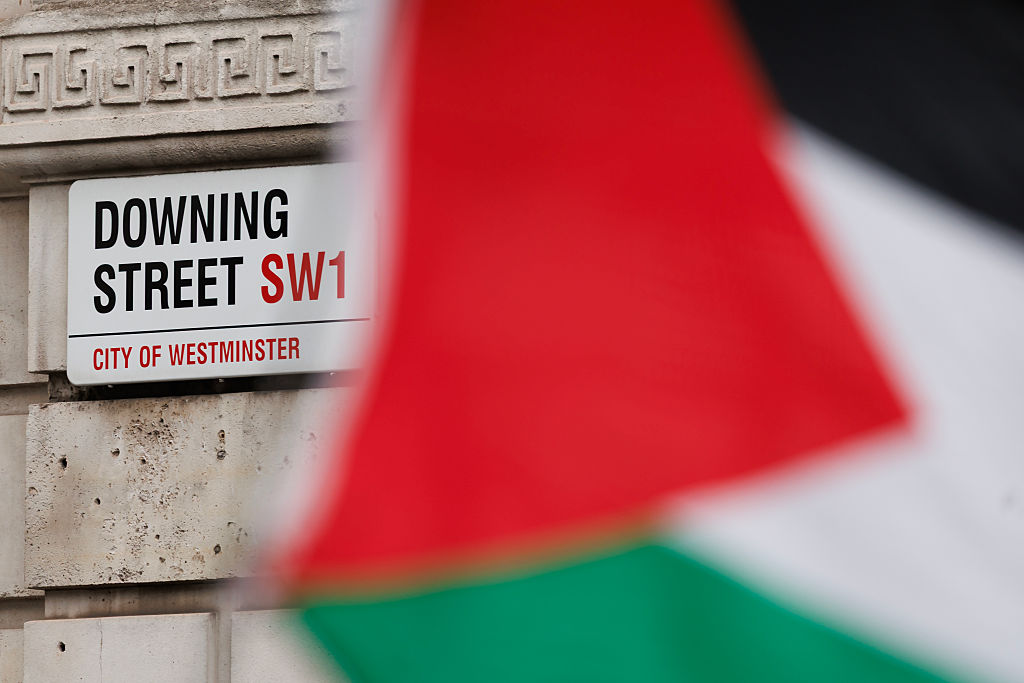When asked to comment on France’s decision in July to recognise the State of Palestine, the Vatican Secretary of State noted that the Holy See has recognised Palestine “da mo’” – a colloquial expression to say, “It has been quite a while now.”
For the Holy See, in fact, the recognition of Palestine 10 years ago was a fundamental step in that “two-state solution” that has never been abandoned.
Every Christmas and Easter, the Pope appears on the balcony of the central loggia of St. Peter’s Basilica for the Urbi et Orbi message, to the city of Rome and the world. The message lists all the international issues dear to the Popes. The Israeli-Palestinian conflict has always been present.
Obviously, the references have varied, depending on the sensibilities of the Popes. The central issue, however, for the Holy See and Israel-Palestine has always been the need for two peoples and two states, and a recognised international status for Jerusalem.
Leo XIV upheld this diplomatic doctrine. It is obvious that, in a dramatic humanitarian situation, the Holy See’s first concern is for people. And, among other things, the Holy Family Parish in Gaza was also among the places hit, in an act that the Israeli army subsequently investigated, but which has always been viewed with suspicion among Christians.
How, then, does the Holy See advance the two-state solution? Through diplomatic means, starting with the recognition of the State of Palestine, which occurred in 2015.
The Holy See’s recognition of the State of Palestine was no accident. The Holy See had already established agreements with the Palestine Liberation Organization in 1994; in 2011, it supported Palestine’s recognition as a state by UNESCO, the UN agency for culture, which paved the way for Palestine’s recognition as an Observer State at the United Nations in 2012.
The Holy See has always viewed this path with caution, interest, and—why not?—benevolence, convinced that it would advance the solution of two states, one Israeli and one Palestinian, with internationally recognised borders, and with international status for the capital, Jerusalem.
Until, on June 26, 2015, the Holy See officially recognised the State of Palestine, signing a comprehensive agreement with a preamble and 32 articles that, yes, aroused the ire of Israel – and Tel Aviv made it known that they reserved the right to study the agreement in detail – but which at the same time was intended to be a model for similar agreements with other countries in the Middle East.
The agreement, in some respects, followed the classic model of bilateral agreements between the Holy See and other states, but it also contained some substantially new elements.
First, the Church received legal recognition, and the right to conscientious objection was established in a powerful manner, unlike anything previously seen in agreements between the Holy See and its counterpart. The agreement also established the Church’s freedom not only in places of worship but also in charitable and social activities, in teaching, in the media, and in public life—the first time this had happened in a Muslim-majority state. Furthermore, the agreement was intended as a “pavement” for a peaceful resolution to the Israeli-Palestinian conflict.
Like all agreements, this one was part of a long journey. The Holy See had signed a basic agreement with the Palestinian Authority in 2000, negotiations began in 2010, and saw—another first—the participation of the Palestinian Catholic community.
Ten years later, that agreement still seems to be a milestone, a point of reference that cannot be ignored. Faced with Israel’s reaction to Hamas’s attacks, the Holy See responded by condemning the dire humanitarian situation that has gradually worsened in Gaza, but always defending Israel’s right to exist, and consistently condemning all terrorist acts.
Yet, while the Knesset (Israel’s parliament) votes to annex the West Bank, effectively rejecting United Nations Resolution 181, the internationally recognised partition plan for Palestine, the agreement between the Holy See and Palestine ultimately sets a limit, proposing the existence of a state with recognised borders. The Holy See, it is worth remembering, also has a Fundamental Agreement with Israel, signed in 1993, some parts of which, however, remain to be finalised.
The Holy See’s diplomatic approach has been to avoid commenting on internal issues. The very existence of the State of Israel is absolutely not up for discussion, while certain situations arising within the state are concerning: For example, the organised attacks against the village of Taybeh in the West Bank (at least three in the last month), the only entirely Christian village.
Leo XIV has been calling for a resolution to the difficult humanitarian situation in Gaza since the beginning of his pontificate in May. After the Church of the Holy Family in Gaza was attacked on July 20, at the end of the Angelus prayer, the Pope used very strong tones. He spoke of “continued military attacks against the civilian population and places of worship”; of “collective punishment” to indicate revenge against the Palestinian community that refuses to distance itself from Hamas; and of “indiscriminate use of force” as well as “forced displacement of the population.”
One might say that the Holy See leans more toward Palestine than Israel. This isn’t the case, strictly speaking. On July 30, Archbishop Gabriele Caccia, the Holy See’s representative toward the United Nations in New York, took the floor at the High-Level International Conference for the Peaceful Settlement of Question of Palestine and the Implementation of the Two State Solution.
His words, very balanced, reflected the Holy See’s position on the matter. On the one hand, Archbishop Caccia noted that ““in the light of the profound anguish and terrible human suffering that has befallen the region, the Holy See reiterates its unequivocal condemnation of the heinous terrorist attack of 7 October by Hamas against the people in Israel. Terrorism can never be justified.”
However, he added that “the Holy See emphasizes that the right to self-defence should be exercised within the traditional limits of necessity and proportionality.”
“The Holy See” – Caccia remarked – “remains gravely concerned by the worsening humanitarian crisis in the Gaza Strip. The devastating impact on civilians, especially the number of children killed, has been compounded by the destruction of homes, hospitals, and places of worship, with the recent attack on the Holy Family Church further wounding an already distressed community. This is deeply concerning given that Christians in the region have long played a vital role as a moderating and stabilising presence, promoting dialogue and peace.”
On a humanitarian level, it is worth remembering that two per cent of Israel’s population is Christian, and 80 per cent of that population is Palestinian. If the Church is there to defend its children, then most of those children are indeed Palestinian.
Hence, the efforts to secure Palestine’s recognition aim to figure out a just and lasting solution. If both Palestine and Israel have internationally recognised States, it might be easier to intervene on an international scale. Also, the equality of sovereignty of Palestine and Israel might help to rebalance forces in the region.
When Palestine was recognised as an observer state by the UN in 2012, the Holy See issued a weighty statement, not as an arbiter, but as a country particularly interested in the unfolding of events and eager to maintain close relations with both the Israelis and the Palestinians. With the Israelis, also to conclude negotiations on the implementation of the Fundamental Agreement, which seems never-ending. With the Palestinians, because the region’s Christians are primarily Palestinian Arabs, an isolated minority that must be protected.
This is still the situation. Of course, diplomatic balance sometimes gives way to concern over the humanitarian emergency. The Holy See-Palestine agreement is, today, a point of reference on which to hold while waiting for the crisis to be resolved.





Vatican prelates warn EU voters not to “isolate themselves”